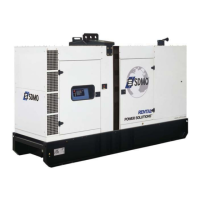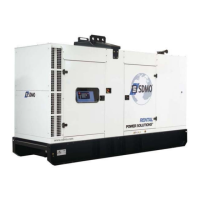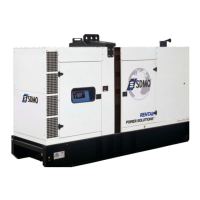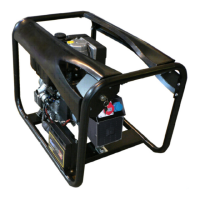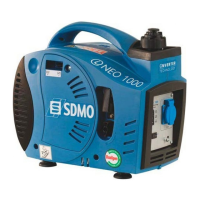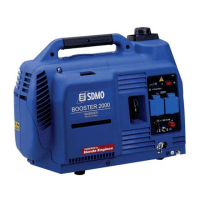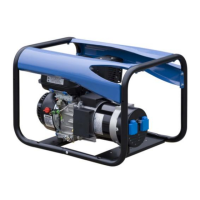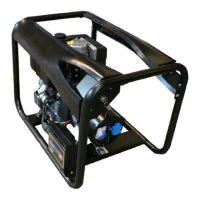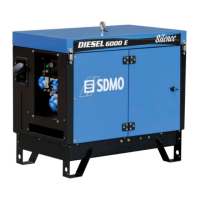4
INSTALLATION AND MAINTENANCE
LSA 42.2 - 2 & 4 POLE
ALTERNATORS
3433 en - 2010.10 / g
LEROY-SOMER
1 - RECEIPT
1.1 - Standards and safety measures
Our alternators comply with most international standards.
See the EC Declaration of Incorporation on the last page.
1.2 - Inspection
On receipt of your alternator, check that it has not suffered any
damage in transit. If there are obvious signs of knocks, contact
the transporter (you may able to claim on their insurance) and
after a visual check, turn the machine by hand to detect any
malfunction.
1.3 - Identication
The alternator is identied by means of a nameplate xed on
the frame.
Make sure that the nameplate on the alternator conforms to
your order.
The generator name is dened according to various criteria
(see below).
Example of description for : LSA 42.2 S4 J6/4 -
• LSA : name used in the PARTNER range
M : Marine / C : Cogeneration / T : Telecommunications.
• 42.2 : machine type
• S4 : model
• J : eld excitation system
(C:AREP / J:SHUNT / E:COMPOUND)
• 6/4 : winding number / number of poles.
1.3.1 - Nameplate
So that you can identify your alternator quickly and accurately,
we suggest you ll in its specications on the nameplate below
(the Information on this is not contractually binding).
1.4 - Storage
Prior to commissioning, alternators should be stored :
- Away from humidity : in conditions of relative humidity of more
than 90%, the alternator insulation can drop very rapidly, to just
above zero at around 100%; monitor the state of the anti-rust
protection on unpainted parts.
For storage over an extended period, the alternator can be
placed in a sealed enclosure (heatshrunk plastic for example)
with dehydrating sachets inside, away from signicant and
frequent variations in temperature to avoid the risk of
condensation during storage.
- If the area is affected by vibration, try to reduce the effect of
these vibrations by placing the generator on a damper support
(rubber disc or similar) and turn the rotor a fraction of a turn
once a fortnight to avoid marking the bearing rings.
1.5 - Applications
These alternators are mainly designed to produce electricity in
the context of applications involving the use of generators.
1.6 - Contraindications to use
Use of the alternator is restricted to operating conditions
(environment, speed, voltage, power, etc) compatible with the
characteristics indicated on the nameplate.
ALTERNATEURS ALTERNATORS
Valeurs excit / Excit. values
en charge / full load
à vide / at no load
Made in FRANCE - 1 024 959/b
Tension
Voltage
Secours
Std by
40°C
27°C
PUISSANCE / RATING
Co nforme à C.E.I 60034-1. According to I.E.C 60 034-1.
C U S
166631
Connex.
Phase
kVA
kW
A
kVA
kW
A
V
Ph.
Continue
Continuous
LSA Date
N° Hz
Min
-1
/R.P.M. Protection
Cos Ø /P.F. Cl. ther. / Th.class
Régulateur/A.V.R.
Altit. m Masse / Weight
Rlt AV/D.E bearing
Rlt AR/N.D.E bearing
Graisse / Grease
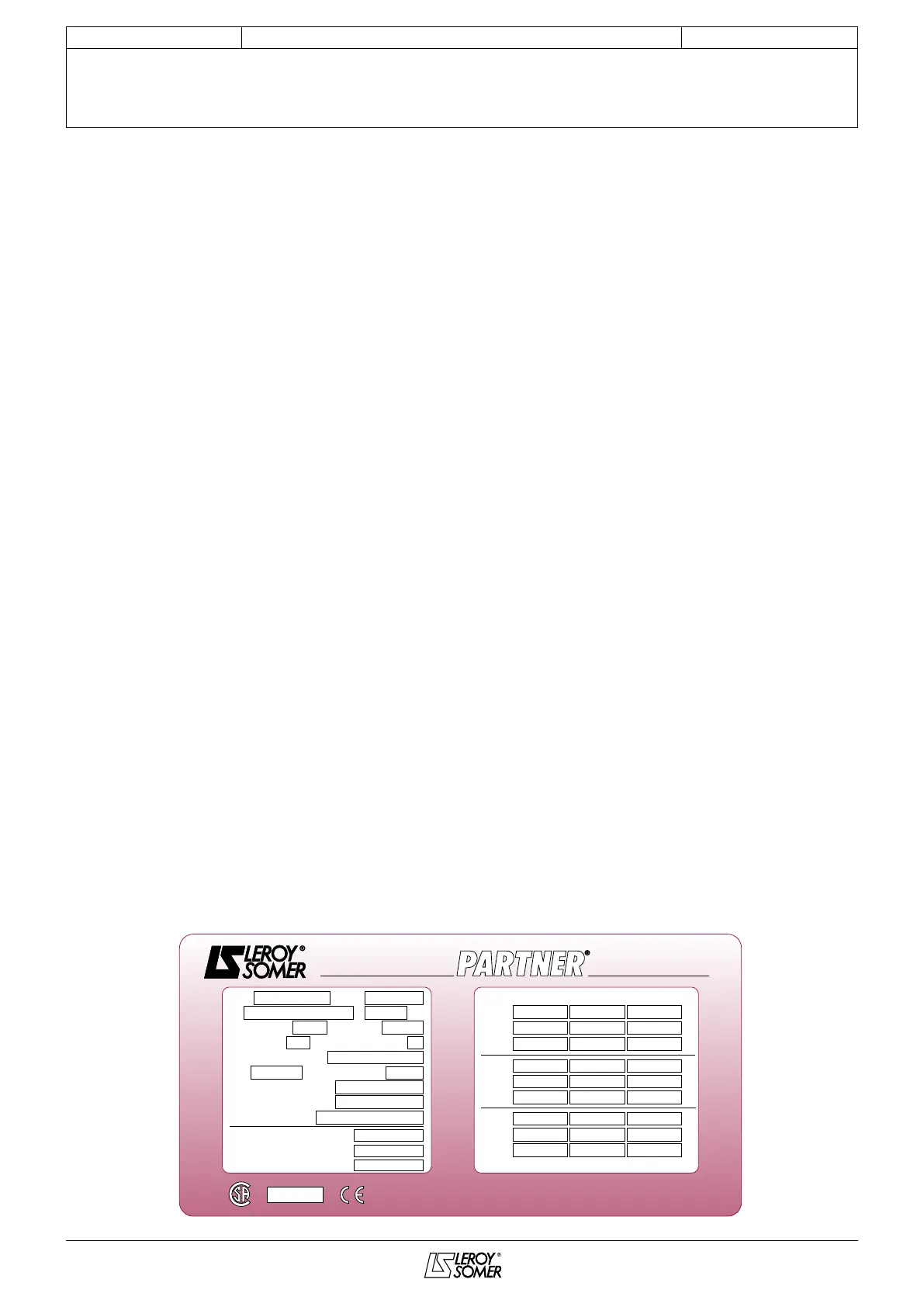